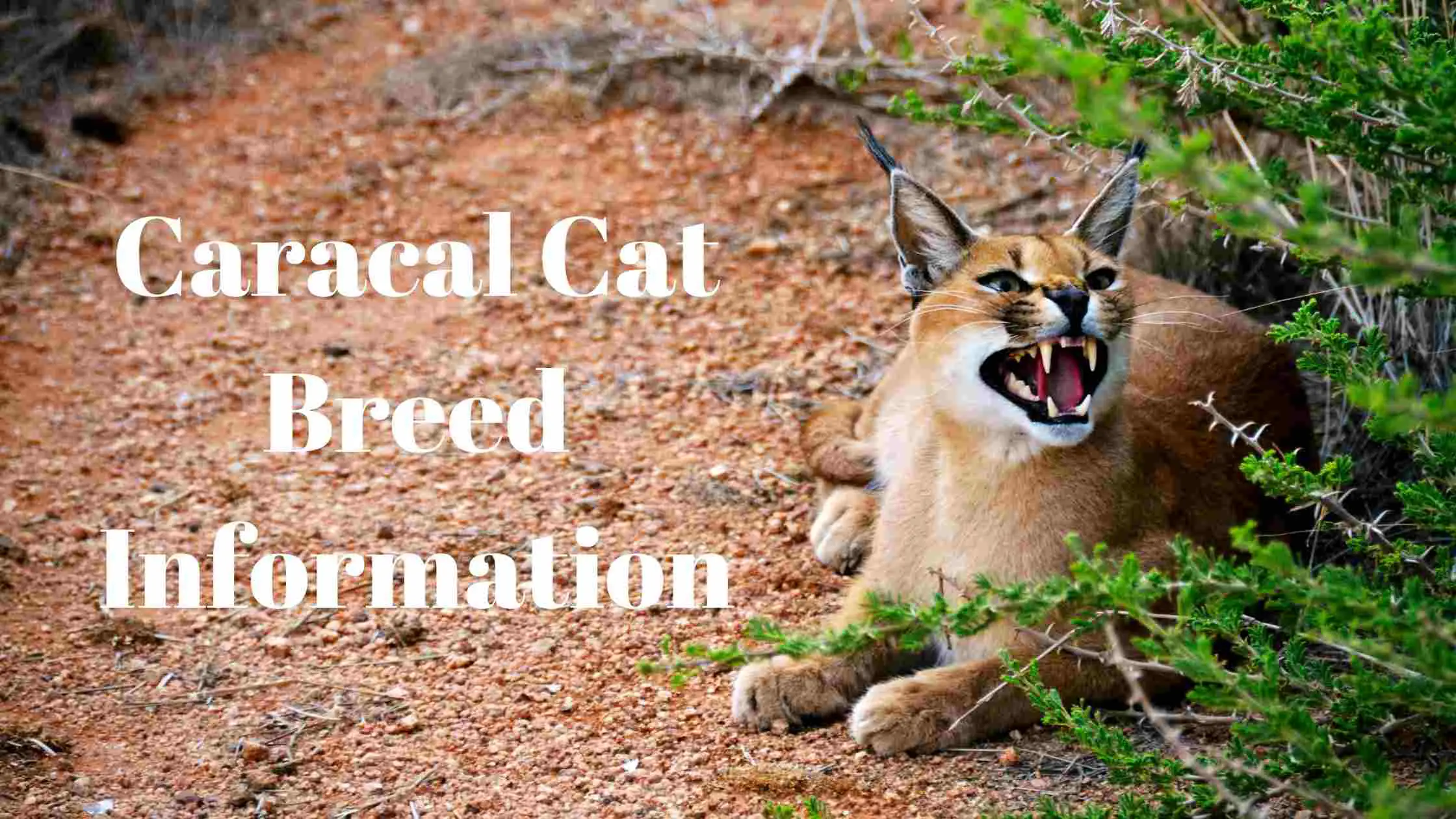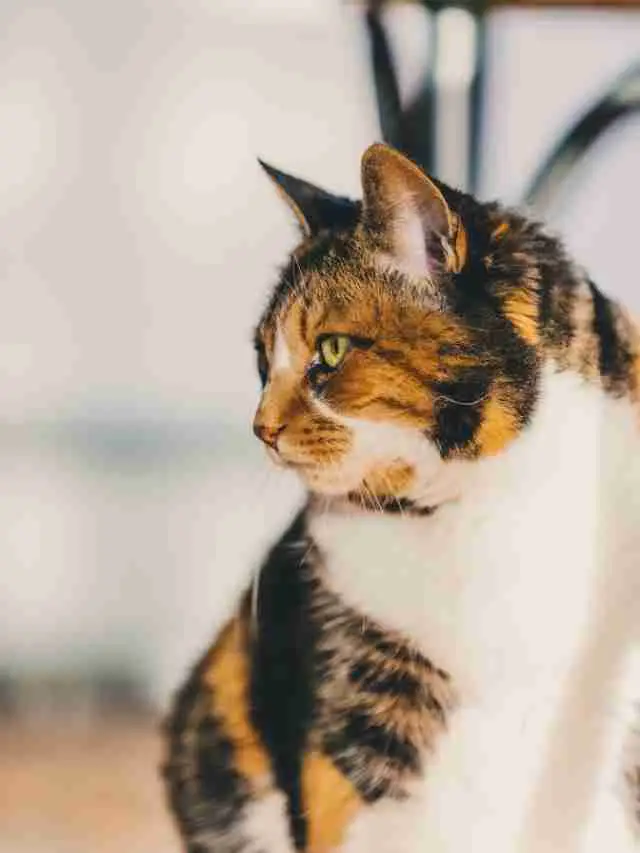Have you ever heard about the Caracal cats? Do you know the meaning of their name? It may be that you have heard this name for the first time or don’t know about their name’s meaning. Ok then, don’t worry, we are informing you about it.
The Caracal name derives from the Turkish word karakulak, which means ‘black ear’: kara = black, kayak = ear. The Turkish connection is the Caspian Sea coast, a region that has spoken Turkish, or Turkish-like languages, for a large part of history. It’s not hard to imagine why this part of the Caracal’s succeeded in being its namesake; the Caracal’s black ears are its most recognizable feature.
The Caracal is a mesmerizing animal. While many people have not even heard about this breed, those who have will never forget them. Their extensive and long ears and lean bodies make them giant cats, and they also can leap high in the air, which gives them an almost mythical hold over the imaginations of the world.
Caracal kittens are primarily unique and cute, but many factors must be considered. Many cat owners have domesticated these cats, and their prices start from $1,700 to $2,800.
We have compiled a whole article to learn about these breeds and their prices that will massively help you for better consideration.
Size And Appearance

Often referred to Caracal as the desert lynx, they do not possess the same physical attributes as the members of a lynx family, such as the characteristic ruff of hair around the face. Instead of that, it has a short, dense coat. As the name implies, the back part of the ears is black and topped with long black tufts about 1.75 inches long.
This tuft shows the characteristic that Caracles do share with the lynx family. This tuft shows the characteristic that Caracles do share with the lynx family. This is the most prominent member of Africa’s small cats and its most formidable. Males weigh up to 40 pounds, and females weigh up to 35 pounds. They stand between 16-20 inches by their shoulder and are 35-39 inches long.
Caracal’s Habitat
Caracals live in the drier savannah and woodland region of sub-Saharan Africa and like the more scrubby, arid habitats. They are found in evergreen and mountain forests but not in tropical rainforests.
Social System And Communication
Caracals are solitary like animals, and their social interactions are limited to mating periods, except for mothers with kittens.
Hunting And Diet
Caracals hunt different types of mammals, the most common being rodents, hyenas, rabbits, and small antelope. Opposite some other African cats, Caracals will not hesitate to kill larger animals than themselves, such as adult springbok or young Kudu.
The Caracals have sometimes reported that they have stored their kills in trees, as do the leopards. These cats are primarily nocturnal but have been seen in protected areas in broad daylight.
Principal Threats
Caracals are killed mainly by livestock predation; however, this is only caused in some of its ranges, but it still adds up to many deaths (2,219 animals in one area alone). In other areas of its content, it fights hunting for its skin and meat, which some bush tribes consider a luxury.
Caracal Cat Price

How much does a Caracal cost? According to Big Cat Rescue, if your state laws allow you to keep them, Caracal cats can cost anywhere from $1,700 to $2,800. Being a pet owner of Caracal cats is more complicated than simply purchasing them from the breeder.
There are also a lot of costs associated with owning a foreign cat. A caracal pet may only run $2,000, but it must be fixed. Finding a vet who will care for your pet can be challenging. There is also the matter of cat food expenses. Caracal pets eat 2-3 pounds of food in one day, which should be fresh meat.
They also need to take supplements to make sure they are healthy. They must receive vaccinations yearly and consider how you’ll get them from their appointments.
Also, we need to be considered to prevent deworming, fleas, and ticks in these big cats. You need to ensure they don’t fall out because enclosures can be expensive. It can run up to $1,000 per acre to build a section for your Caracal.
And, of course, obtaining a permit can be pretty expensive and challenging. You’ll need to put a special provision on your homeowner’s insurance that can cost anywhere from $1,000 to $15,000 per year.
Unfortunately, many aspiring Caracal pet owners do not consider all of these costs and variables before deciding to buy one and end up in over their heads. Rescues, such as Big Cat Rescue, take in many different species of exotic cats each year because owners abandon them.
These animals require considerable time and monetary commitment, which many potential owners do not realize.
Is it legal to own a Caracal Cat?

To keep Caracals as pets before, they must be declared legal. They’re also just cute furry cubs for a long time. You will need to bring a vet willing to take your wild cat. Startup costs include a stainless steel squeeze cage which costs $1,250, and you’ll need to arrange for annual vaccinations, check-ups, etc., possibly a van to transport the cage to comply with state regulations—enough land for, and a large and safe room where your cat will live.
Recurring costs include 2 to 3 pounds of fresh meat daily and essential vitamins, annual shots, veterinary bills, vaccinations, worming, licenses, and permits.
Also, remember that 98% of these animals purchased as pets die in their first two years when you keep them in captivity. If you think that’s all for you, and if you’re ready for all future vacations, that’s all right. Then you can move on to the next step!
Are Caracal Cats Rare?
The subspecies of this Caracal weigh less than 10kg. It has a plain rufous coat that camouflages it in sandy, scrubby vegetation. Its distinctive feature is back pointed tufts of hair on his large ears and black markings on his cheeks. They are considered rare or threatened in Asian North America.
It forms the easternmost boundary of the worldwide range of Caracal. Species can often become rare at the edge of a geographic distribution as the habitat they use becomes limited. So Caracal is a rare species found naturally.
The actual number of Caracals in the wild is unknown. They are considered rare or dangerous in Asia and North Africa. Crackles are more common in South Africa and Namibia, where their range is expanding, possibly due to farmers’ extinction of black-backed jackals. An additional danger is service housing loss.
Are Caracal Cats safe?

A caracal is a wild cat, and not safe to get close to and personal with him unless it is probably your own Caracal. They have sharp fangs with the exclusive remit of biting to rip, shred and kill. They also have a genetic makeup and tools to attack anything and anyone that seems to be dangerous.
Its retractable claws are not primarily there for scratching an itch behind its ear. They are for slashing at possible threats and stocking into a rival’s flash to cause harm.
Caracals are infamous for attacking livestock, but they rarely attack humans. Many argue that with regular protection and affection, caracals can be cared for in the same way as traditional domesticated domestic cats.
These cats are not domesticated, so you can not make them your favorite pet. And if you want to have a cradle, you have to use a cage for that. They are a species of wild cats, medium size, but they have very long canine teeth and long legs. They can leap up to 10 meters on the ground to catch a bird.
So be careful if you are going to be a pet owner of these cats. You should keep in mind all things which are explained above by us.
Is Caracal a good pet?
The care and maintenance of these magnificent animals are best left to professionals and experts with considerable resources. So Caracals make good pets for some people who can adequately house, feed, and care for these big cats.
Are Caracals legal in worldwide?
Caracals are listed in Schedule first for the wildlife protection act 1972, at par with the tiger and the Asiatic Lion and the highest possible level of legislative protection that a wild species worldwide can ever receive.
Do Cracals meow like other cats?
Cracal cats generally behave like other cats, and they meow, growl, hisses, spit, and purr like them.
How fast does a caracal cat run?
A caracal can run up to a speed of 50mph, and It’s no surprise that caracals are also known as gazelle cats.
Why do caracals like their ears?
One is to attract birds, their favorite prey. They like to sit in tall grass and flap the tops of their ears, fooling the birds into thinking they are insects, bringing them closer and making them easier to catch!
Can we handle the Caracals?
From the theory of keeping these cats, you need to handle them from their young age and as potentially as adults. They may behave well with traditional cat-like behavior: they play and interact on their own terms. You cannot initiate affection at any moment. When they do play, they can be destructive and furious.
Can Caracal cats be dangerous?
Of course, yes, Caracals are dangerous wild cats, and they run significantly faster than other such animals like antelopes and ostriches. They are skilled, tenacious climbers and capable diggers, capable of killing predators twice their size. They are also territorial and mainly nocturnal.
What is the lifespan of Caracal?
The average lifespan for a caracal cat in the wild is 10 years to 12 years. In captivity, they can live up to 15 to 18 years if you give them a proper diet. Caracals are 23.5 to 36 inches long and can weigh between 9 and 42 pounds. Male caracals are usually larger than females.
Is caracal a big cat?
The Caracal, also called Persian lynx or “African Lynx,” is a medium-sized wild cat. Caracals are labeled as small cats, but they are the heaviest of all small cats and the fastest.
Do Caracals survive?
Caracals are also called desert lynxes because they are similar to lynx. Caracals are agile tree-climbers and sometimes deposit the remains of their prey in the thorns of trees or shrubs. They can survive for long periods without water, getting moisture from their hunt.
Conclusion
In the name of neutrality, it is essential to point out that there are some exotic cat owners who successfully and happily keep caracals as pets. However, they are relatively few and far between, and they have made great sacrifices to save these majestic animals.
They cannot take vacations, as their pets require constant maintenance and cannot be left in the care of someone unlicensed. Cats also sacrifice themselves reluctantly: they must be declawed and generally remain in an area a mere fraction of the size of a regular caracal field.
They are fantastic creatures and should make their captive owners happy. If you think you are qualified and financially capable of keeping a caracal as a pet, you certainly can if you live in a state where it is legal. You must remember and be prepared to invest a lot of time, money, and energy in caring for an older cat that would love to live in its natural habitat.
We hope you all like this article, and it will help to clear all your doubts about the Caracal cats. Kindly share this article with friends who owns or want a cat.

